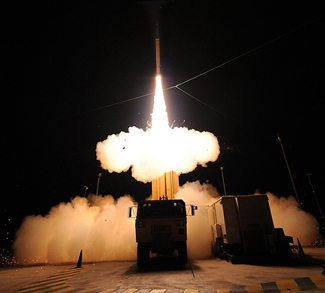Recent comments on US plans to deploy X-Band radar stations in southern Japan and possibly Southeast Asia suggest that the Obama administration’s ‘Asia Pivot’ is gaining momentum.
The Obama administration has always had a clear vision of where the US military is needed the most: not the Middle East, where transitory energy supply concerns have swallowed up American blood and treasure, but East Asia, the lynchpin of global shipping and home to the first post-Cold War challenger to US military predominance.
These plans are complicated by the fact that China sees East Asia as its own strategic domain; the space that it can rightfully occupy given its increasing political and economic weight. A good historical analogy would be the US Monroe Doctrine that sought to keep European colonial powers out of what the US perceived to be its own sphere of influence. As such, China’s military modernization has been weighted heavily towards area-denial weapons meant to limit the ability of the US Navy to operate in waters off the coast of China; waters that border several key US allies such as Japan, South Korea, the Philippines, and to a lesser extent Taiwan. The crowning jewel of the Chinese area-denial push is the DF-21D anti-ship ballistic missile, a platform that has been described as a ‘one-shot aircraft carrier killer.’
This kind of area-denial capability threatens the credibility of US military power in East Asia. But that’s where the expansion of the X-Band radar network comes in.
American officials have claimed that this potential placement of an X-Band installation in southern Japan is a response to the threat posed by North Korea, and that may well be the case, but it would also have the added side effect of wrapping an extensive radar blanket around China; one that may expand even further if radar systems in South Korea, Taiwan, and India were ever integrated into a wider regional system.
X-Band is a highly sophisticated type of radar that has the range and sensitivity required to give anti-ballistic missile platforms enough time to act. It is said to be able to detect a softball tossed in the air from 2,900 miles away, and has already been deployed in Israel and northern Japan. X-Band detection can be used in tandem with Terminal High Altitude Defense (THAAD) and ship-based anti-ballistic missile platforms. According to the Wall Street Journal article that broke the story of the Obama administration’s X-Band expansion in Asia, the US military is currently building six new THAADs and 10 new anti-ballistic missile capable warships, over half of which are bound for deployment in the Pacific.
Obviously, these weapons will affect the military balance in East Asia. They will help assuage Japanese fears over both North Korea and an increasingly nationalist China, and they will increase the credibility of US military deterrence in regards to a potential conflict over Taiwan.
But the X-Band expansion and increases in anti-ballistic missile platforms can’t change geography, and the US military will have a hard time maintaining an upper hand in what is essentially China’s backyard. For example, any anti-ballistic missile system can be overwhelmed and thus circumvented by simply increasing the amount of missiles being fired. Given the fact that China already has over 1,000 missiles aimed at Taiwan, the X-Band radar network couldn’t hope to prevent massive damage in the event of a conflict in the Taiwan Strait. However, it would help to limit the damage from any such attack and prevent small-scale ‘punitive’ strikes in the region.
This move provides some substance to what has until now been a largely rhetorical Asian pivot. It looks like the US government is serious about going toe-to-toe against China in East Asia. Consequently, announcements of more troops and equipment transfers to Asia should be expected in the future.




